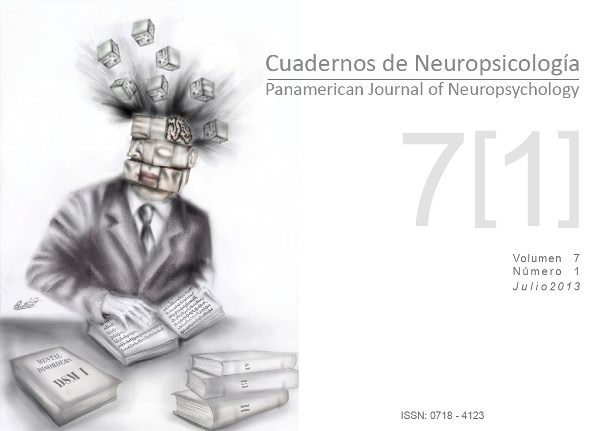Un Estado del Arte sobre Estudios NeurocientÃficos del Trastorno Obsesivo Compulsivo
Abstract
El presente trabajo consiste en una revisión de recientes investigaciones neurocientÃficas sobre el Trastorno Obsesivo-Compulsivo (TOC). Con motivo de ello, se comienza por relevar el modelo orbito-frontal-estriado que se ha propuesto como explicación de este trastorno. Por otra parte, también se revisan investigaciones que sugieren que alteraciones en el circuito corticoestriado pueden explicar las compulsiones presentes en dicho trastorno. Luego de ello, se realiza un recorrido por una serie de estudios que amplÃan el modelo con la adición de otras regiones cerebrales para explicar las manifestaciones de dicho trastorno. En este sentido, se abordan investigaciones recientes que plantean que estructuras del sistema lÃmbico como la amÃgdala y el hipocampo poseen una participación fundamental en el desarrollo de los sÃntomas cognitivos y afectivos que caracterizan al TOC. Por último, la revisión permite concluir que existen avances significativos en la explicación del TOC. Esto se evidencia con particular relevancia en los estudios que incluyen al sistema lÃmbico para explicar dicha patologÃa. Sin embargo, se considera conveniente realizar un acercamiento con mayor profundidad sobre estos tópicos en futuras investigaciones.Downloads
Published
How to Cite
Issue
Section
License
Articles published in this journal are protected under the Creative Commons Attribution-NonCommercial-ShareAlike 4.0 International (CC BY-NC-SA 4.0) license. This means that authors retain full rights over their research and publications at all times. As a journal, we fully respect and promote the principles of open access established by this license, allowing the work to be shared, adapted, and distributed for non-commercial purposes, provided that appropriate credit is given to the authors and any derivative works are licensed under the same terms.
Authors are responsible for obtaining the required permission when they wish to reproduce part of the material (figures, etc.) from other publications.
Likewise, CNPs allows authors to host in their personal sites or other repositories that they deem convenient the Final and Definitive Version of the published article with the format assigned by the journal. In no case do we allow access to preprints of the article under evaluation or already published.
When submitting an article to CNPs you are aware that all the contents of CNPs are under a Creative Commons License. In which it is allowed to copy and share the contents freely, always making reference to the origin of the publication and its author.





